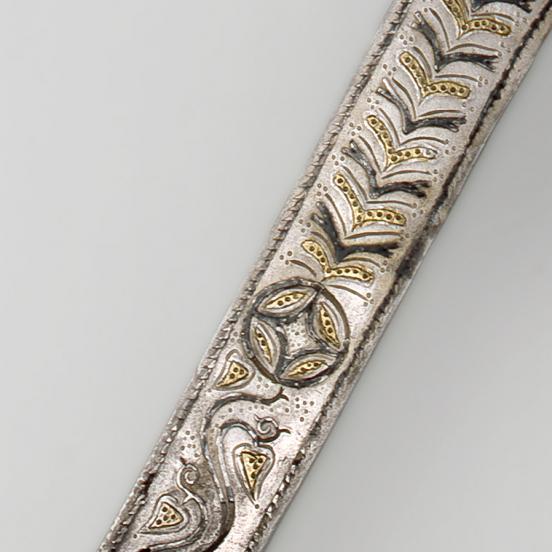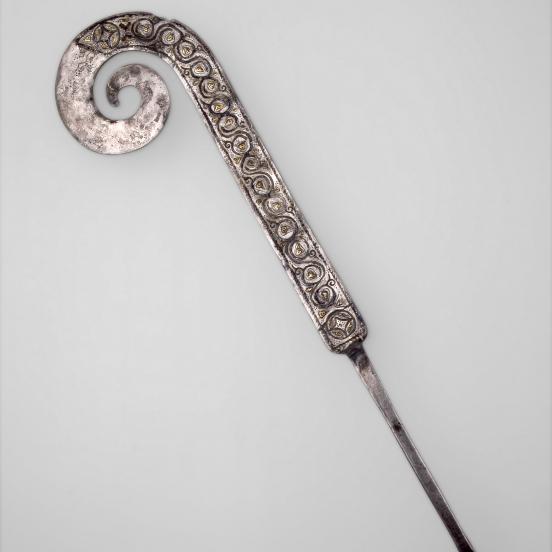Silver augur staff, Brigetio
The silver staff that was discovered in a stone sarcophagus to the south of the military fortress Brigetio (Komárom-Szőny) is considered a unique find from the Roman Empire. Similar staffs were used by the augurs, oracles studying the flight of birds when making predictions and appointing locations for temples. The priestal insignia must have been placed as a part of the grave goods in the sarcophagus, because the deceased was probably the last augur in the town. The 33-cm-long staff with a spiral top is richly decorated with scrolls, leaves and geometric motifs inlayed with dark niello (silver sulphide) and gold on both sides. A gilded and niello-decorated crossbow fibula with onion-shaped finials ( a brooch for clasping garments), to which textile shreds were attached, was found by the right shoulder of the deceased. The augur staff and the fibula must have made up a set. Silver augur staff with niello inlay, front ((Photo: © Hungarian National Museum)


